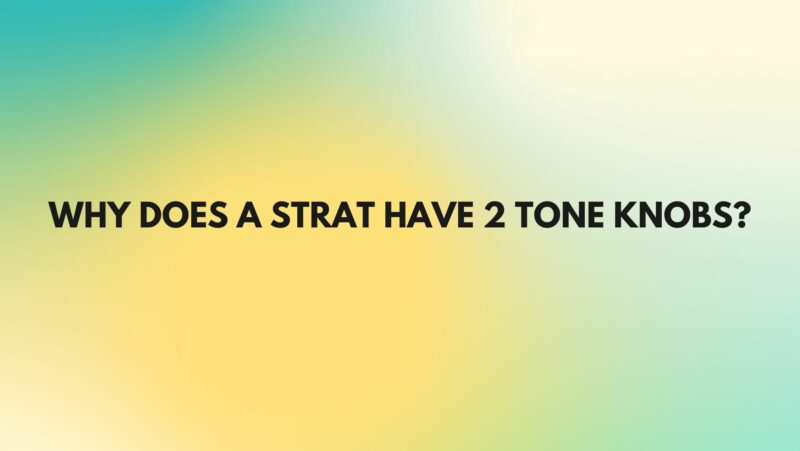The Fender Stratocaster, often lovingly referred to as the “Strat,” stands as one of the most iconic and influential electric guitars in the world. A hallmark of the Stratocaster’s design is its control layout, which includes two tone knobs. This distinctive feature raises questions among guitarists, especially those new to the instrument, about the necessity of having two separate tone controls. In this comprehensive article, we will explore the historical origins, functional purposes, and musical advantages of having two tone knobs on a Stratocaster, demystifying their role in shaping the guitar’s legendary sound.
The Birth of the Stratocaster
To understand the rationale behind the dual tone knobs on a Stratocaster, we must journey back to the early 1950s when Leo Fender, the visionary founder of Fender Musical Instruments Corporation, was pioneering electric guitar designs. At that time, Fender had already made significant strides in the industry with instruments like the Telecaster and Precision Bass.
The Tri-Sonic Pickup Configuration
One of the groundbreaking innovations introduced with the Stratocaster was the use of three single-coil pickups, each strategically positioned along the guitar’s body. This arrangement, known as the “Tri-Sonic” pickup configuration, was a game-changer for electric guitars. These three pickups were:
- Neck Pickup: Positioned nearest to the neck, the neck pickup was renowned for its warm, round, and full-bodied tones, making it ideal for jazz and clean, melodic playing.
- Middle Pickup: Located between the neck and bridge pickups, the middle pickup offered a balanced tonal response that could adapt to a wide array of musical styles.
- Bridge Pickup: Positioned closest to the bridge, the bridge pickup was celebrated for its bright, cutting, and articulate tones, with a pronounced attack that was well-suited for rock, blues, and country genres.
Tonal Shaping and Artistic Freedom
With the introduction of the Tri-Sonic pickup configuration, Fender recognized the need for enhanced tonal control. This realization paved the way for the inclusion of two tone knobs on the Stratocaster, a feature that allowed players to fine-tune their instrument’s tonal characteristics with precision.
The Function of the Tone Knobs
Here’s how the two tone knobs on a Stratocaster work:
- Neck Pickup Tone Knob: The first tone knob is dedicated to the neck pickup. By turning it counterclockwise, you roll off the high frequencies, resulting in a warmer, mellower tone. Turning it clockwise allows more high frequencies to pass through, creating a brighter sound.
- Middle Pickup Tone Knob: The second tone knob is designated for the middle pickup. Similar to the neck pickup tone knob, it permits you to adjust the middle pickup’s tonal qualities to your liking.
Enhancing Tonal Flexibility
The inclusion of two tone knobs on a Stratocaster significantly expands the guitar’s tonal palette and artistic possibilities. By independently manipulating the tone controls for the neck and middle pickups, players can fine-tune the warmth and brightness of their sound, tailoring it to suit various playing styles, musical genres, and personal preferences.
Conclusion
The presence of two tone knobs on a Fender Stratocaster is a testament to Leo Fender’s dedication to innovation and his commitment to providing musicians with the tools they need to shape their sonic identity. These controls offer players the ability to sculpt and customize their guitar’s tone, catering to a diverse range of musical genres and expressive techniques. The Stratocaster’s dual tone knobs, along with its unique pickup configuration, have cemented its status as a legendary instrument that empowers guitarists to explore a rich tapestry of sounds, from sweet, soulful melodies to searing, electrifying solos.

